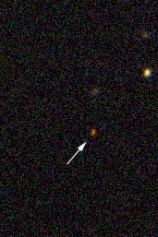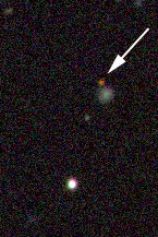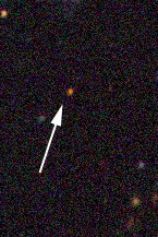SPACE PAGE
|
|
The universe in general
|
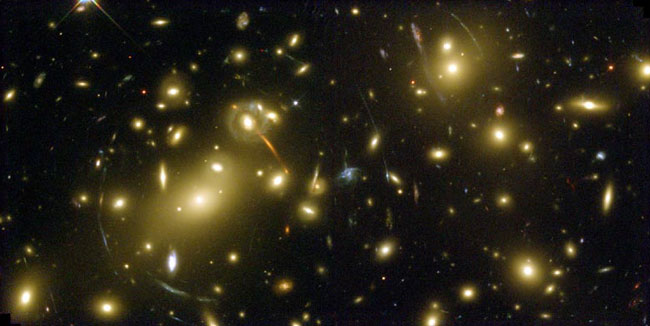
|
We will start our voyage through the universe with a brief
explanation
of the universe in general.
Scientist around the world do not know much about the universe but
we think that a long time ago, about 10,000,000,000 years ago,
there was nothing, just a ball with a lot of energy that eventually
exploded so violently that it shot matter really far away, it was
called the big bang. That was the beggining of the universe.
|
|
Quasars
|
|
|
|
Each red speck indicated above is a powerful quasar estimated to
be over 100 times brighter than a galaxy. Yet in these Sloan Digital
Sky Survey discovery images the quasars appear faint because they are
extremely distant. Their distances have been indirectly gauged by
noting how much the light they emit has been stretched to longer
wavelengths by the expansion of the Universe. Because red light has
the longest wavelengths in the visible spectrum, this stretch has
come to be called "redshift" - the greater the distance, the greater
the redshift. Astronomers use a number known as "Z" to quantify this
cosmological redshift and the quasar at the left, with a Z of 5, was
just proclaimed the new quasar redshift champion (from left to right
the measured Zs are 5.00, 4.90, 4.75). What's the actual distance to
quasars with Zs of 5 or so? ... about 15 billion light-years, give
or take a few billion light-years depending on your favoritecosmology!
more on quasars
|
|
Our local group
|
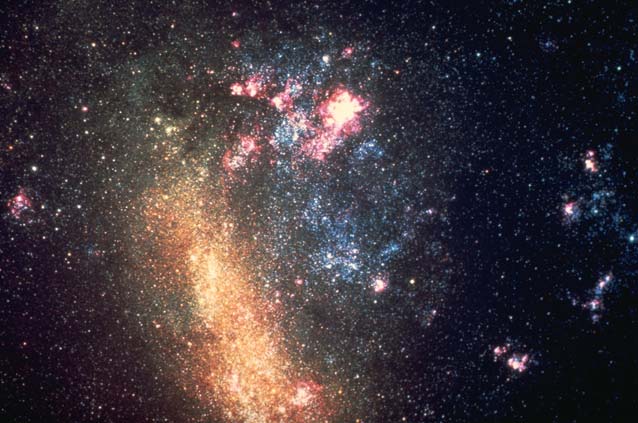
|
|
We live in the Solar System. The Solar System is in the galaxy,
"The Milky Way", and that is in a group or neighboorhood called
"The local group". The galaxy in the picture is part of our local
group, it's the large Magellanic cloud. If you want to know more
about our local group, click on the corresponding link.
|
|
more on local group
|
|
Any Problems?
|
YA!Way too far away!
The Solar sistem please
|


